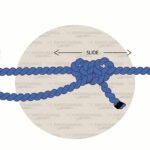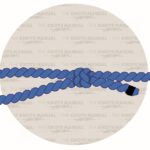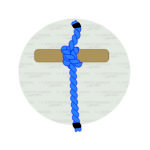A rolling hitch is a knot that we use to attach a rope to another rope or object, like a pole. It acts as a friction hitch, and you pull on it lengthwise across an object. Rolling hitches have been around since the 19th century, but they used to go by the name “Magnus hitch.”
There are two kinds of rolling hitches. The first is better for securing a rope to an object like a pole or rod. The second is better for securing a rope to another rope. Follow the directions below to learn how to tie these knots.
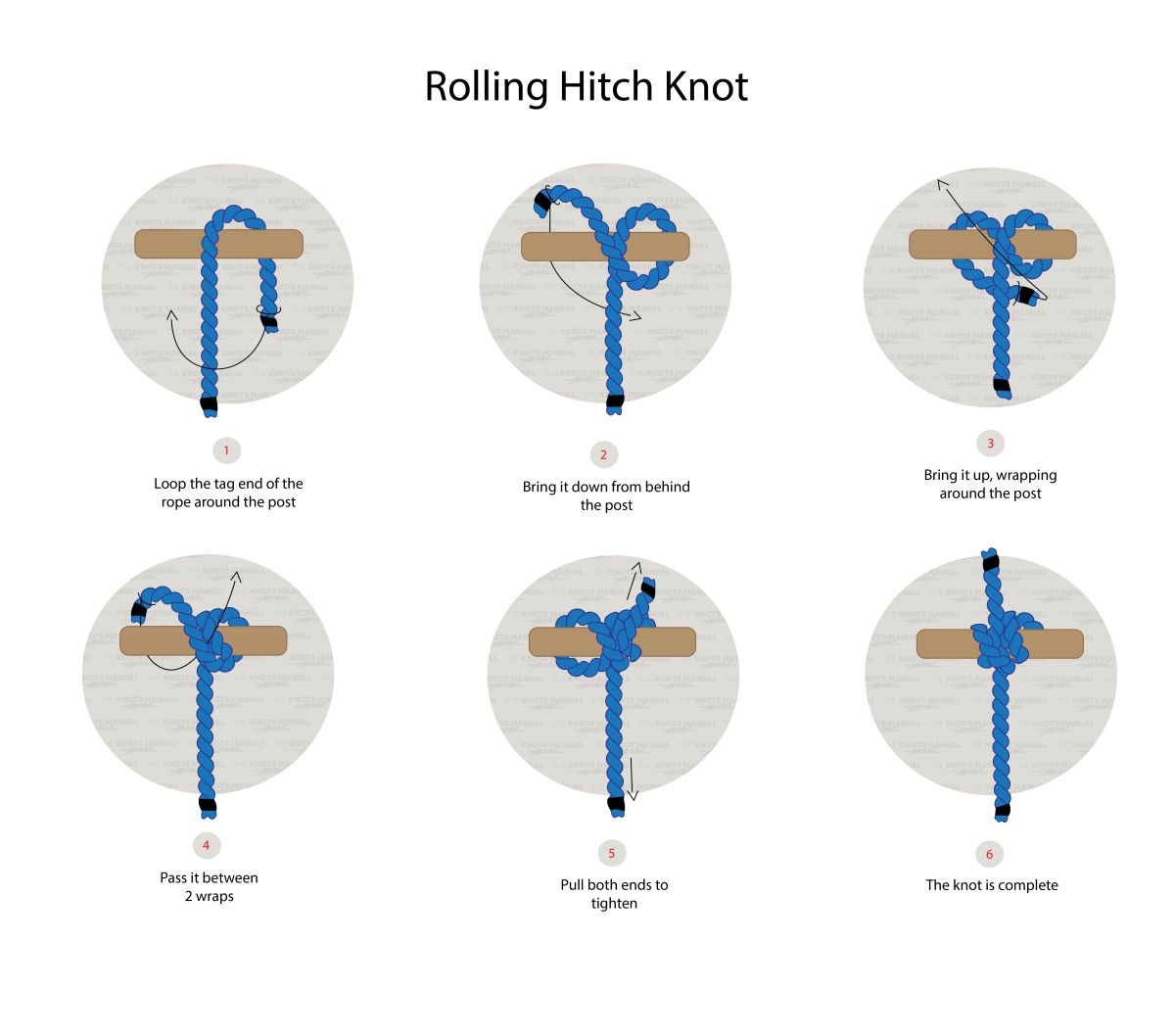
The rolling hitch knot is primarily used in sailing. It helps release tension and control the sails. You can also use it to tie clotheslines, and it’s common in the construction industry for hauling tools.
There are six other knots like the rolling hitch:
- Magnus hitch
- Taut-line hitch
- Icicle hitch
- Jamming knot
- Safety belt hitch
- Clove hitch
What Is A Rolling Hitch?
A Rolling hitch knot, or Magnus hitch, is a type of slide and grip knot. We use it to attach rope to a pole, rod, or another rope. While using it, you will pull the rope lengthwise across an object, using it as a friction hitch. It resists lengthwise movement in one direction of the pull. Conversely, other similar knots pull at right angles.
Unlike most knots, you can tie and untie the rolling hitch even when holding a load. Rolling hitches don’t bind. They also don’t slip if you tie them correctly and use the right kind of rope. Rolling hitches are only suitable for natural rope materials. They slip with most synthetic rope materials.
The rolling hitch has been around since the 19th century, but it was known as the “Magnus hitch” or “Magner’s hitch.” The “rolling hitch” was a term during that time, but sailors used it to describe a different kind of knot. They did not use the modern terminology for “rolling hitch” until 1841. Author and sailor Richard Henry Dana, Jr, used the term for the first time in his book, The Seaman’s Friend.
Similarly, the “Magnus hitch” likely refers to a different knot than it used to. According to The Ashley Book Of Knots, two kinds of rolling hitches exist. There is the “Rolling Hitch (1)” and “Rolling Hitch (2).” The book numbers the first hitch as “1734” and the second as “1735.” On the other hand, the Magnus hitch receives the number “1736,” indicating it’s a separate knot.
How To Tie A Rolling Hitch (1)
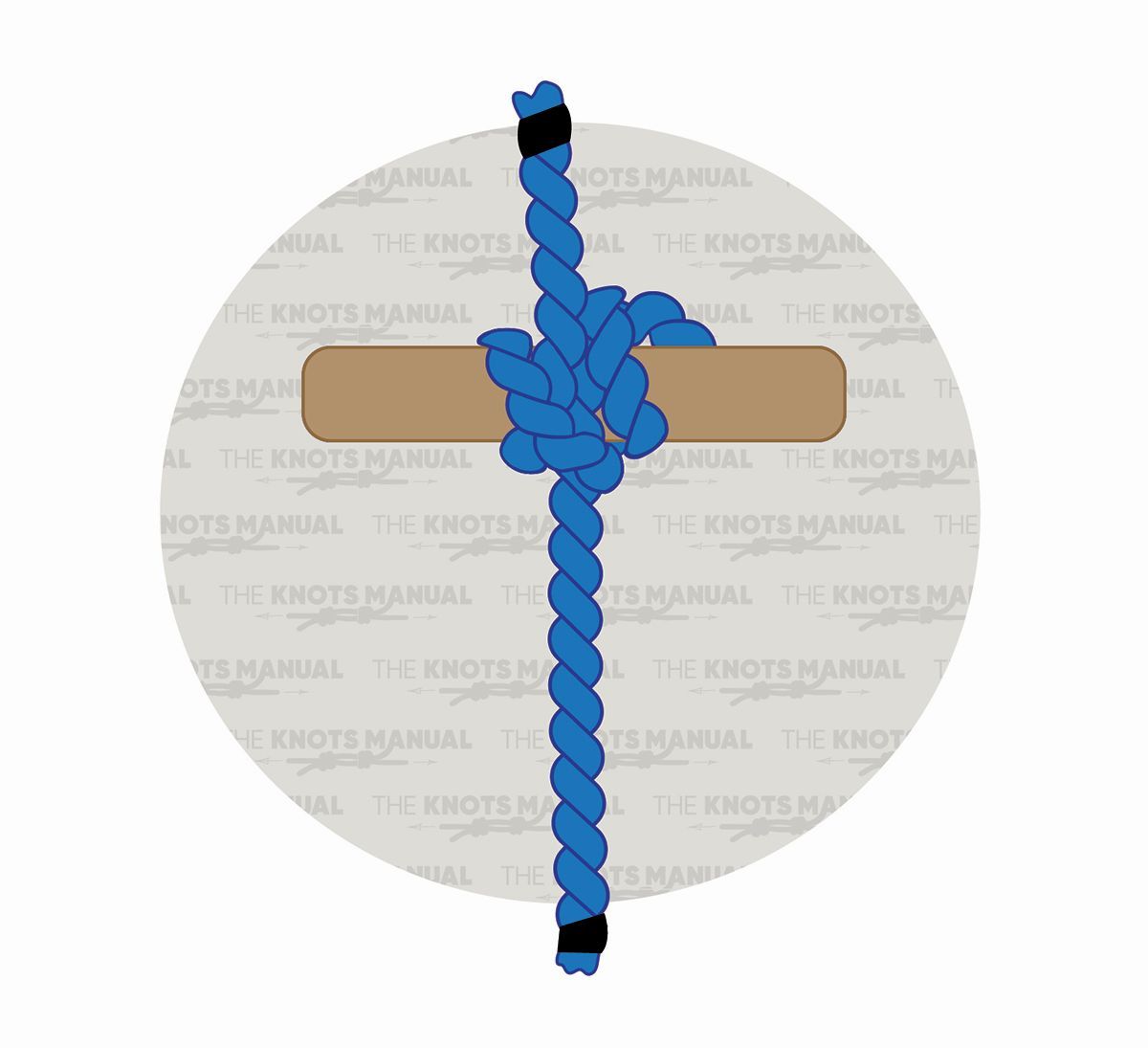
The rolling hitch (1) is the preferred knot for attaching a rope to a rod or pole. To tie a rolling hitch knot (1), follow these 6 simple steps:
Step 1:
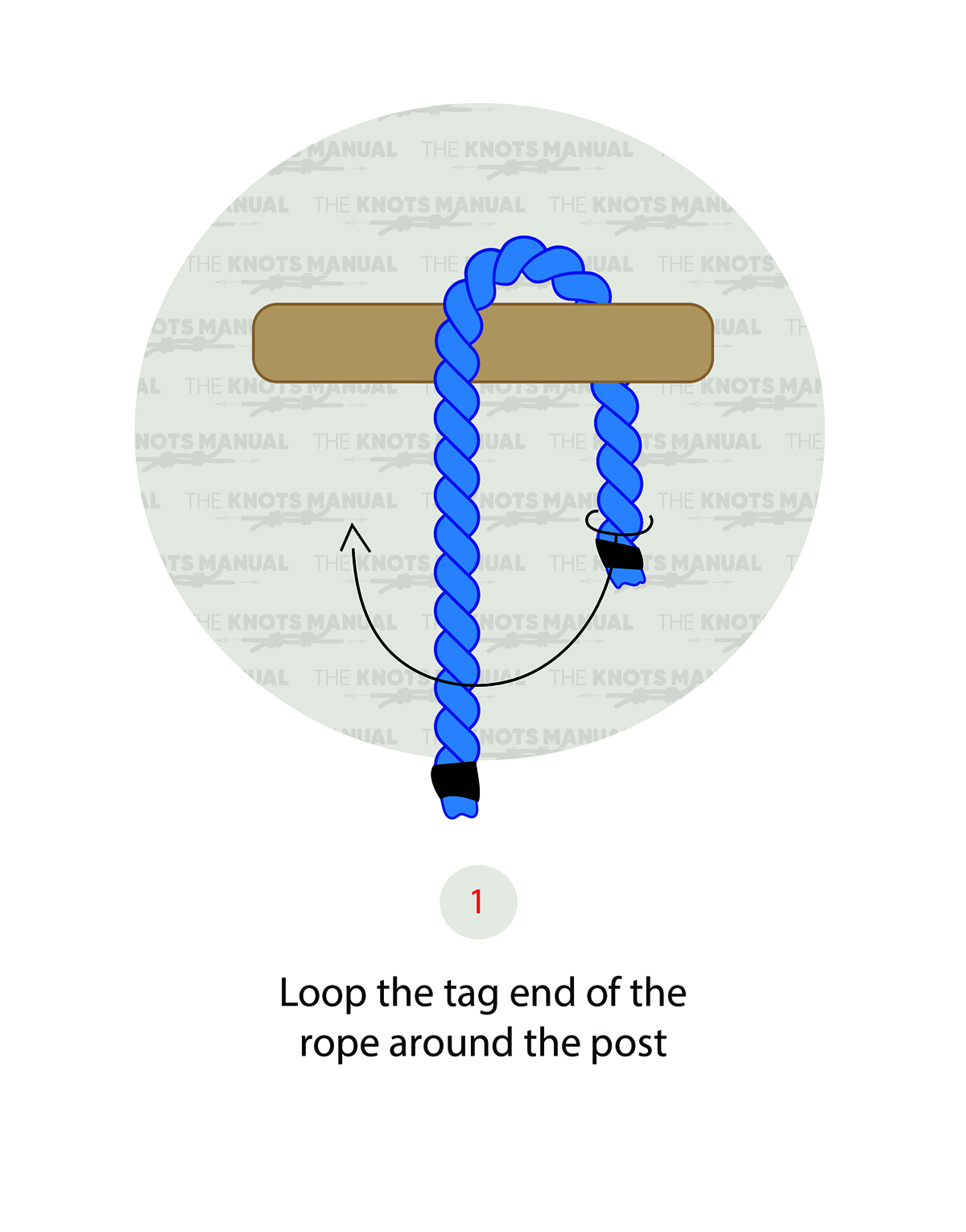
Loop the working end of the rope around a post.
Step 2:
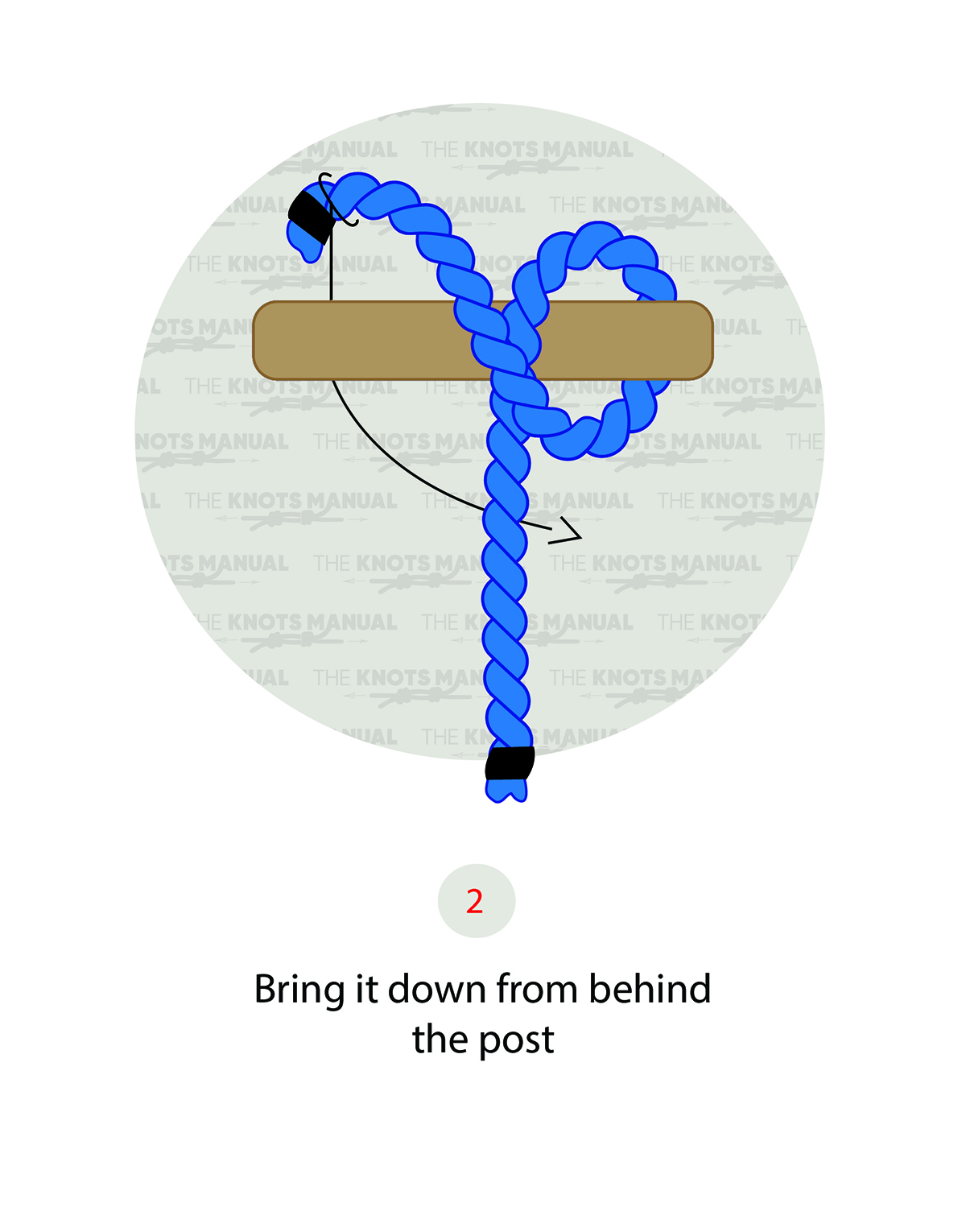
Bring the working end down from behind the post.
Step 3:
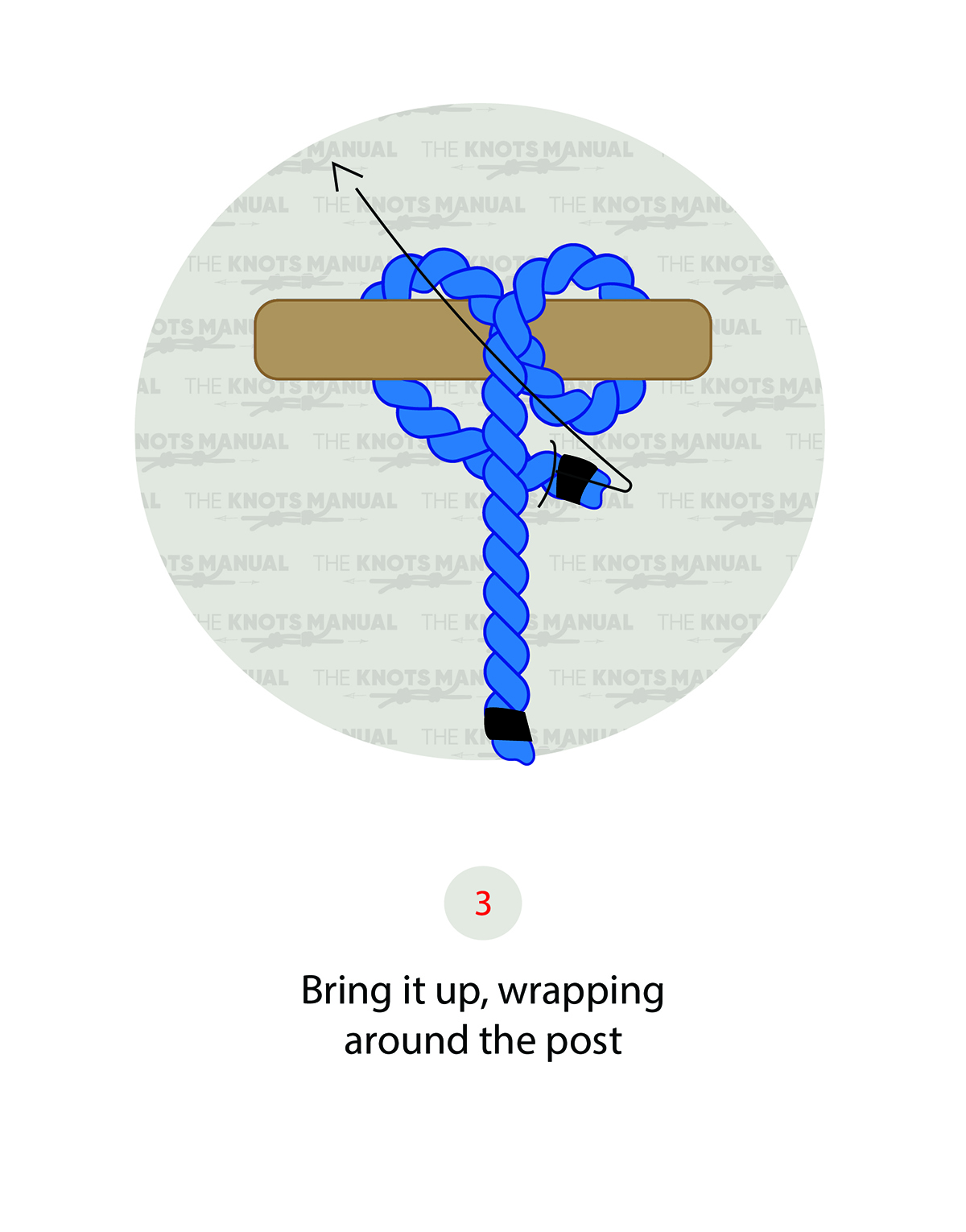
Bring the working end back up, wrapping it around the post.
Step 4:
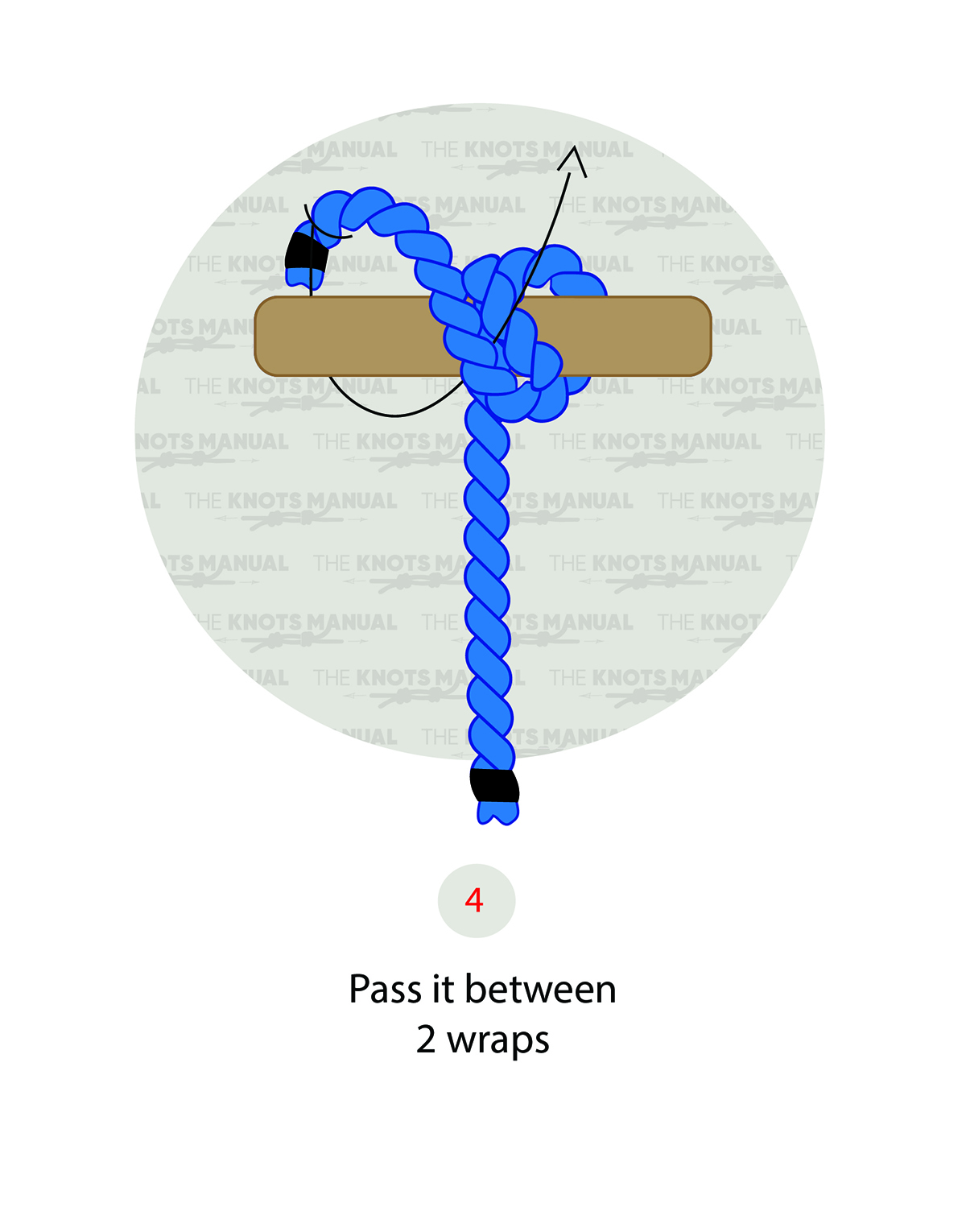
Pass the working end under the post and then underneath the first wrap. You will pull it upwards from between the two wraps.
Step 5:
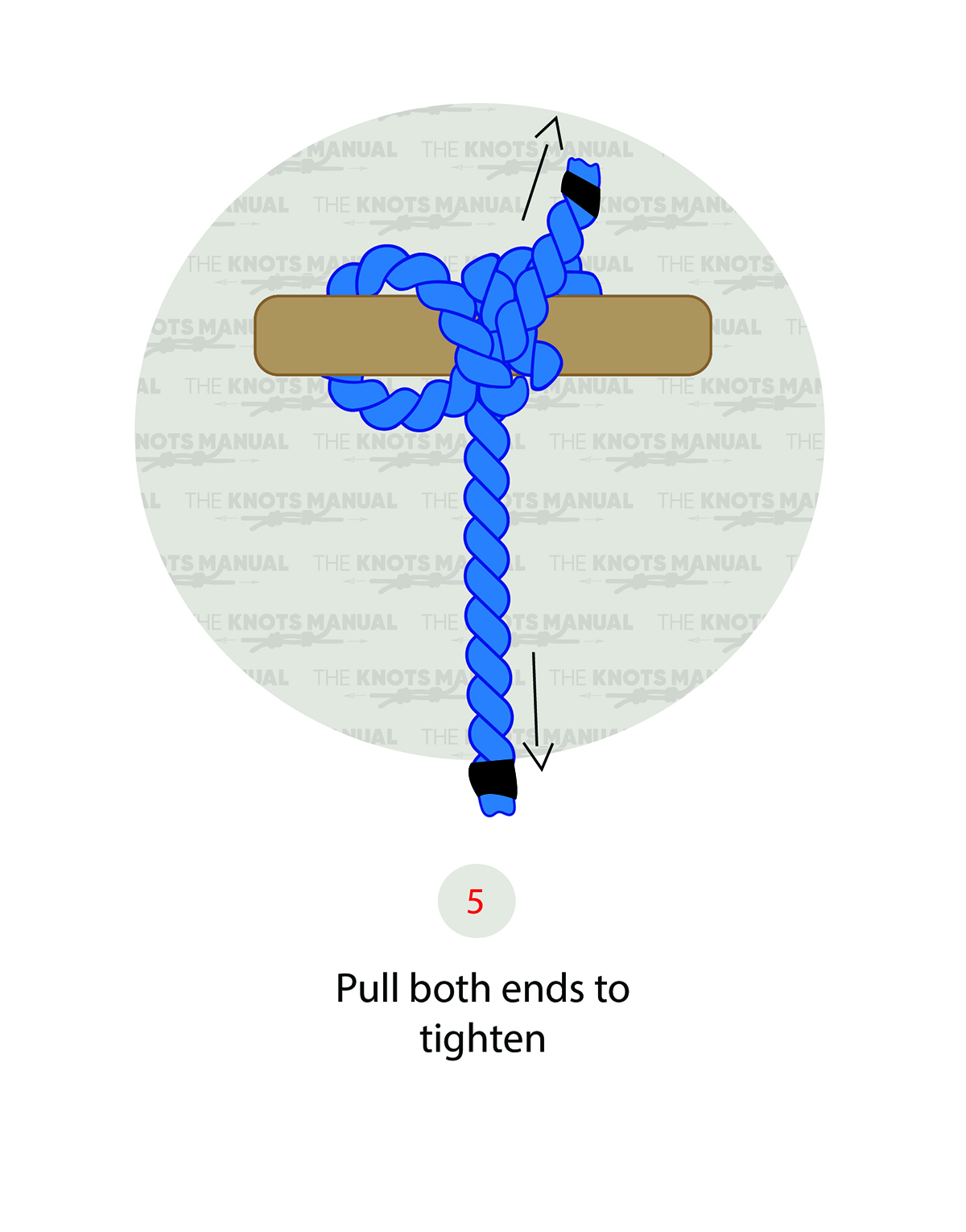
Pull the working end and standing end simultaneously to pull the knot tight.
Step 6:
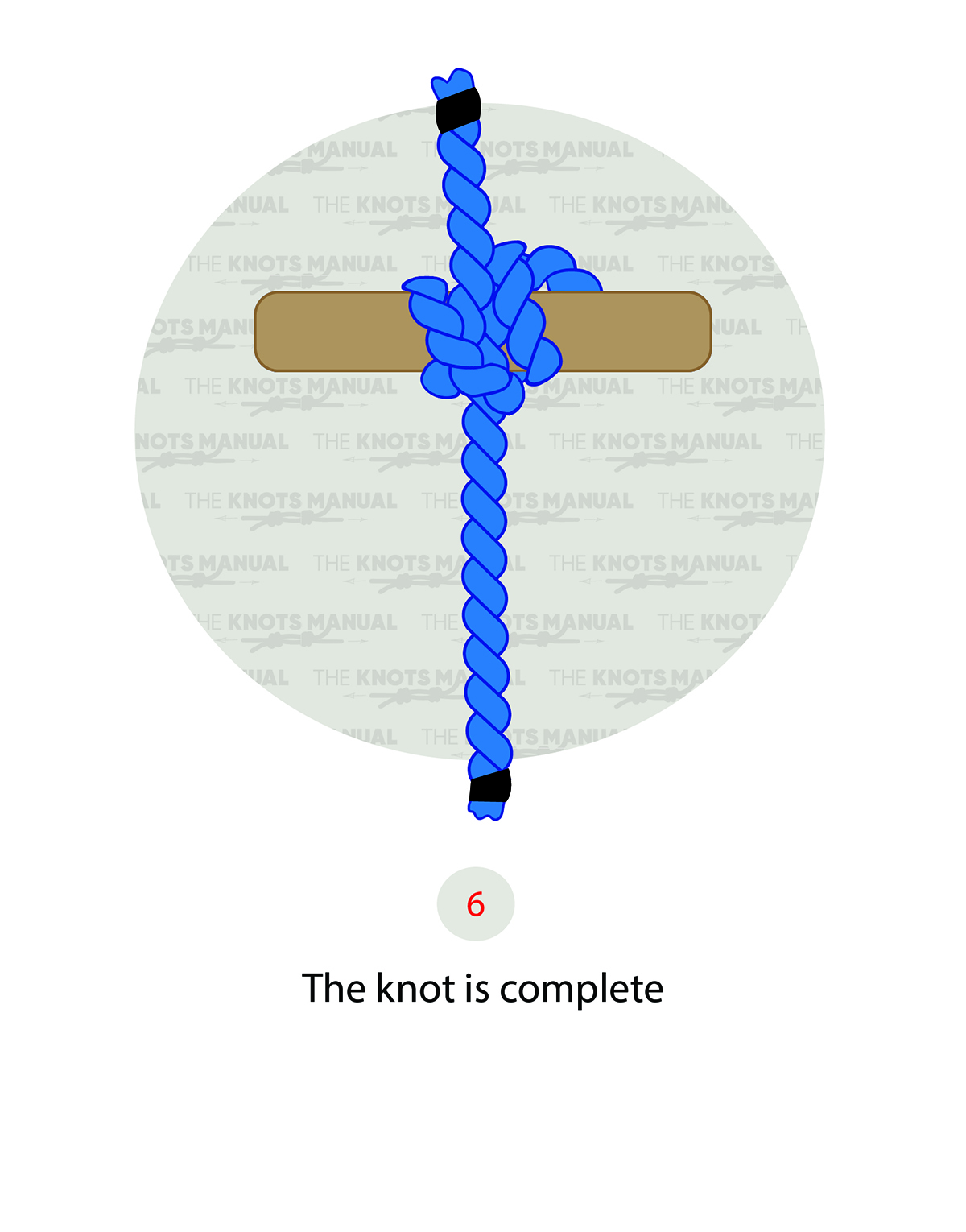
The rolling hitch knot is complete.
How To Tie A Rolling Hitch (2)
The rolling hitch (2) is the preferred knot for attaching a rope to another rope. Usually, rolling hitches attach a thinner rope to a thicker one.
To tie a rolling hitch knot (2), follow these X simple steps:
[1] Loop the working end of the rope around a post.
[2] Bring the working end down from behind the post.
[3] Loop the working end around the post again, then cross it over the rope’s standing part.
[4] Pass the working end around the post, then under the rope’s standing part.
[5] Pull the working end and standing end simultaneously to pull the knot tight.
[6] The Knot is complete.
Uses Of The Rolling Hitch
Ever since their creation, rolling hitches have been most prevalent for boating uses. Rolling hitches help relieve tension and secure items on the boat.
Sailing & Boating
Rolling hitches can be used for:
- Rigging a stopper
- Relieving strain on a hawser
- To create Midshipman’s hitches
- For a Boom-vang
Saliers often use rolling hitches to rig a stopper. It releases the tension of the sails so you can clear a jammed winch or block. They also use it to relieve the strain on a hawser while they transfer the “bitter end” to the “bitts.”
Rolling hitches can also be used to create a “midshipman’s hitch,” which is an adjustable loop on the end of a rope. Boaters use these as a spring lock to a dock. They can also use them as a boom-vang, a line on a sailboat that controls the shape of the sails.
Tying rolling hitches used as spring lines with a bight (loop) rather than the working end is better. Using the bight is suggested when the rope has a long tail end, such as when used as a spring line.
To tie a rolling hitch using a bight, begin the knot with one strand of the loop. Keep the other strand out of the way, and do not pull the bitter end through the loop. Next, use the bight to tie one or more half hitches to take the strain of the load.
Other Uses
Rolling hitches are mainly used in sailing and boating, but there are a few other uses:
- Tying clotheslines
- Pulling up hoses by firemen
- For pulling tools in construction and arboriculture
Knots Similar To The Rolling Hitch
Magnus Hitch: These knots are basically rolling hitches. Yet, the final wrap is made in the opposite direction.
Taut-Line Hitch: These knots form an adjustable loop. They are meant to slip to tighten or loosen a line easily. A taut-line hitch is like a rolling hitch tied to a line after it’s secured to an object.
Icicle Hitch: The icicle hitch is often used as a more secure substitute for the rolling hitch. It connects a rope to an object with a load applied parallel to it.
Jamming Knot: A jamming knot is a binding knot used to constrict a bunch of objects. These knots are popular for securing pieces of wood.
Safety Belt Hitch: Three rope turns comprise the first part of the knot, but the knots are not “tucked up.” Then a final hitch is created to complete the knot. Steeplejacks use safety belt hitches.
Clove Hitch: These are less secure than rolling hitches when tying a rope to another object or rope. Clove hitches are better for loads applied perpendicularly to the supportive object.
FAQs
How Secure Is A Rolling Hitch?
Of the two knots, rolling hitch (2) is more secure. You must pull the ends taut before adding a load, regardless of which knot you use. The knot will not tighten any further after adding the load.
The rolling hitch is secure when using natural fiber ropes with moderate loads. It can be hard to secure under all conditions. Avoid using modern synthetic fiber ropes that are slick and stiff. Making a rolling hitch hold with many synthetic ropes is nearly impossible.
The rolling hitch is also likely to slip when tied around wire or stainless steel tubing. So, avoid these materials.
